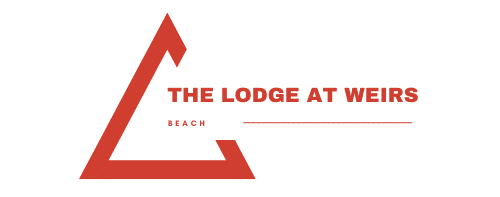How Can Personalized Biomechanical Feedback Assist with Injury Prevention in Professional Dancers?

In the universe of professional dancing, injury prevention is critical. Dancers, like athletes in other sports, rely heavily on their physical capabilities to excel in their craft. In an effort to minimize injuries, sophisticated systems have been developed, leveraging data and technology to offer targeted, personalized feedback on dancers’ performance. Among these, the use of wearable sensors is becoming increasingly prevalent. These devices allow for the collection and analysis of biomechanical data in real-time, providing valuable insights into training methods, performance, and injury prevention.
The Importance of Data in Injury Prevention
The infusion of data into the world of professional dance can fundamentally transform the way dancers train and perform. When it comes to injury prevention, data plays a significant role in unveiling the patterns and identifying the areas of improvement.
A lire en complément : What Are the Optimal Strategies for In-Season Strength Maintenance in Professional Alpine Skiers?
Wearable sensors, a type of biomechanical device, are used to collect this data. These sensors can track a variety of metrics, including movement patterns, force exerted, and muscle activity. Once this data is collected, it can be analyzed using sophisticated algorithms to identify potential injury risks.
For instance, suppose a dancer’s data indicates they are exerting excessive force on their knee during a particular move. In that case, this information can be used to modify their technique or training routine to reduce the risk of a knee injury. This type of personalized feedback can be invaluable in helping dancers maintain their physical health over time.
A lire en complément : What’s the Impact of Music Therapy on Focus and Performance in Long Distance Runners?
The Role of Wearable Sensors in Biomechanical Feedback Systems
The development and application of wearable sensors in the field of dance represent a major breakthrough. These devices offer an unprecedented level of detail and precision in capturing biomechanical data.
Small and lightweight, these sensors can be attached to various parts of a dancer’s body. They operate in real-time, capturing data on each twist, turn, jump, and landing. This provides a wealth of information that can be used to understand the biomechanical demands of different dance routines and identify potential causes of injury.
Moreover, the data collected by these sensors can be combined with video footage of a dancer’s performance, providing a holistic view of their technique. This can facilitate a more detailed analysis and help to pinpoint specific areas where changes could reduce injury risk.
The Integration of Biomechanical Feedback Systems in Training Regimes
Integrating biomechanical feedback systems into dancers’ training regimes can have a profound impact on injury prevention. These systems can provide real-time feedback, allowing dancers to make immediate adjustments to their technique. This real-time feedback can also be used by teachers and trainers to guide dancers and help them optimize their performance while minimizing injury risk.
Furthermore, these systems can be used to monitor a dancer’s progress over time, tracking improvements in technique and identifying any recurring issues. If a dancer is consistently exerting too much force on their ankle during a particular move, for instance, this could indicate a need for targeted conditioning or strengthening exercises.
It is also worth noting that the data collected over time can contribute to the wider body of knowledge on dance biomechanics. Scholars in the field can use this data to further our understanding of dance-related injuries and how to prevent them.
The Role of Scientific Research and Scholarly Papers in Injury Prevention
Scientific research, often published in scholarly papers, plays a crucial role in pushing the boundaries of injury prevention in dance. Many of these studies rely on data collected from wearable sensors, using this information to test new theories and explore innovative approaches to injury prevention.
For instance, research published in CrossRef, a respected academic journal, highlighted the potential of a new, data-driven approach to dance training. The study used biomechanical data collected from professional dancers to develop a personalized training program. The results showed a reduction in injuries and an improvement in performance, underlining the value of data and wearable sensors in injury prevention.
Future Developments in Biomechanical Feedback Systems
The field of biomechanical feedback systems is continually evolving, with new developments likely to further enhance our ability to prevent injuries in professional dancers. Advances in technology are likely to produce more sophisticated wearable sensors, capable of capturing an even wider range of biomechanical data.
Moreover, the wealth of data generated by these devices is likely to drive advances in artificial intelligence and machine learning. These technologies can analyze vast amounts of data quickly and accurately, identifying patterns and trends that might be missed by the human eye.
Additionally, the integration of these systems into virtual or augmented reality could provide new ways for dancers to visualize their performance and receive feedback. This could offer a more immersive training experience, helping dancers to better understand their movement patterns and correct potential issues.
Throughout these future developments, the aim remains the same: to use data and technology to reduce the risk of injury and help dancers reach their full potential in a healthy and sustainable way.
The Utilization of Google Scholar and Crossref PubMed in Biomechanical Data Research
The world of academic research, particularly platforms like Google Scholar and Crossref PubMed, plays an indispensable role in the advancements of biomechanical feedback systems for injury prevention among professional dancers. The cross-pollination of ideas and findings across these platforms helps to drive innovation and refine techniques and best practices.
Google Scholar and Crossref PubMed are treasure troves of research papers, systematic reviews, and scholarly articles on dance biomechanics. Researchers can access these platforms to explore existing studies and to identify gaps in the literature. These platforms provide a rich source of data that can guide the development of new research questions and hypotheses.
For instance, scholars can utilize the information found in these databases to understand better the common overuse injuries among ballet dancers, such as rotator cuff injuries. They can then design studies to investigate whether specific movement patterns or training habits are associated with these injuries.
These databases also present opportunities for interdisciplinary collaboration. For example, researchers in the field of Internet of Things (IoT) devices can work with dance scholars to develop new wearable sensors or improve existing ones. Similarly, dance scholars can collaborate with experts in motor skills or cross-training to explore how these elements impact injury prevention.
In essence, Google Scholar and Crossref PubMed are not just simple repositories of academic articles. They are catalysts for innovation in the field of dance injury prevention, fostering a dynamic and collaborative research environment.
The Future of Biomechanical Feedback Systems in Dance Studios
Looking toward the future, dance studios will likely become increasingly high-tech environments. The progression of wearable sensors and IoT devices, driven by continuous research and development, is expected to radically transform dancers’ training and performance experience.
For starters, the future generation of wearable sensors will likely be more sophisticated, capable of measuring a wider range of biomechanical metrics. These sensors could potentially capture subtle nuances in dancers’ movements that current devices might miss. This would provide a more comprehensive view of a dancer’s technique, enabling more precise and effective injury prevention strategies.
Moreover, advancements in AI and machine learning will significantly enhance the capability to analyze biomechanical data. These technologies will be able to process and interpret vast amounts of data in real-time, offering instant feedback to dancers. This real-time feedback will allow dancers to adjust their technique immediately, reducing the risk of injury.
The integration of biomechanical feedback systems with virtual or augmented reality technologies could also revolutionize the dance studio experience. Dancers could use these technologies to visualize their movements and receive feedback in a more immersive and intuitive way. This could help improve motor skills and correct movement patterns that may contribute to overuse injuries.
Finally, the systematic review of data collected across multiple dance studios, facilitated by platforms like Google Scholar, Crossref PubMed, and Web of Science, will enable more comprehensive studies. These studies could provide broader insights into dance-related injuries and more effective prevention strategies.
In a nutshell, the future of the dance studio will be characterized by the seamless integration of technology and dance. This fusion will harness the power of biomechanical feedback systems to minimize injury risk, enabling dancers to push their boundaries and reach their full potential in a healthy and sustainable way.
